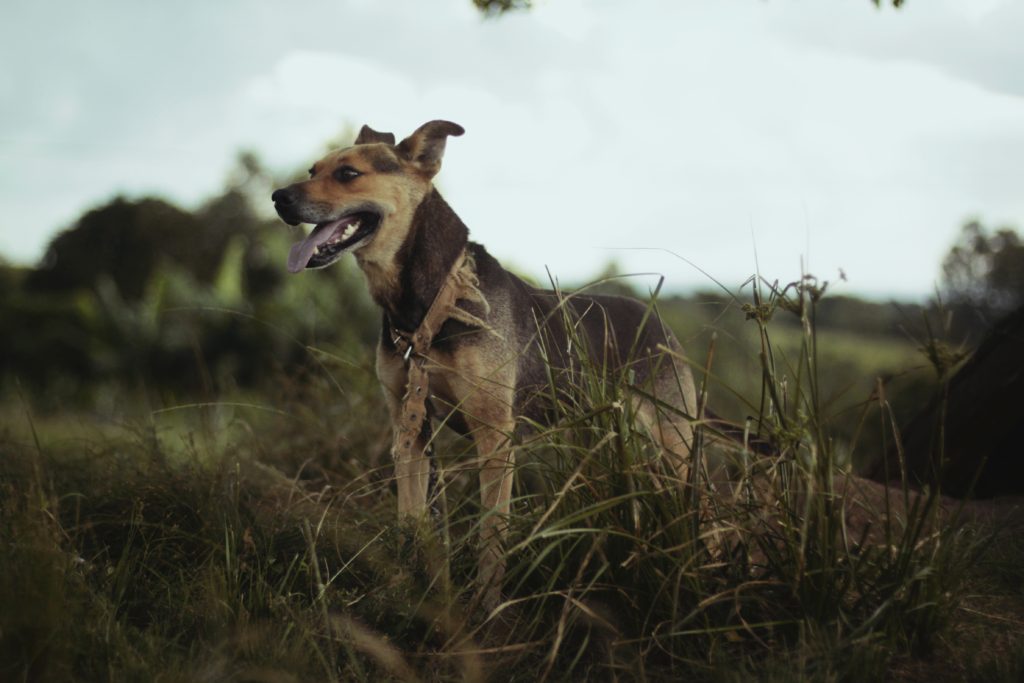
The leave command, also known as ‘dog zen’, is possibly the most important command of all. ‘Leave’, as distinct from ‘drop’, tells the dog to disengage from an object, another animal or a human, on cue.
The importance of ‘leave’ is that it teaches the dog to control its instinctive urge to move towards things that it wants or things that it dislikes and for owners this can become a powerful and incredibly useful tool. A solid ‘leave’ should be essential puppy training, up there with an instant ‘sit’, beautiful lead manners and an impeccable recall.
There are different ways to teach this command and most trainers will have a preference. However, the essential aim is to teach the dog that a tiny disengagement (averting its eyes momentarily or looking away) earns a reward. Once the dog understands this principle the owner can then begin to ask for more of the required behaviour before a reward is delivered.
Here is an example of how to teach the first stage of ‘leave’.
- Hold a treat on an open palm right under your dog’s muzzle, say ‘leave’ in a calm voice. As soon as he tries to take it, snap your hand shut. Aside from the snapping movement your hand must be still.
- While your dog tries to make you open your hand by sniffing and pawing at it, remain silent, the dog has to figure out what gets the hand to open.
- If your dog’s teeth or claws hurt, wear a glove.
- Dogs will try many times before they give up trying to get your hand open. On giving up they will probably look at you as though to say “what do I do now?” This is the start you want -the dog has made a decision not to take the food.
- IMMEDIATELY open your hand and repeat the command to ‘leave’.
- At this point, the dog may look at you, slightly step or turn away, sit or lie down. If your dog does any of these calmly praise him and reward him with the treat, thrusting your hand to his mouth, saying ‘take it’.
- Repeat until you can open your hand and the dog makes no attempt to take the food on first presentation and ‘leave’.
- Timing is CRITICAL if your dog is to understand the exercise. You need to open your hand the moment he moves away, and shut it the moment that he moves towards the food.
- Once the dog is leaving on first presentation begin to vary the duration the dog leaves before rewarding. Sometimes make reward almost immediate, other times wait longer and gradually increase the maximum duration. If you do not provide this variation the ‘leave’ becomes a trick.
- So long as the dog ‘leaves’, give him CALM praise- this tells him he is doing the right thing but it DOES NOT MEAN he gets the treat. Note excited praise may cause the dog to try to snatch the treat.
- If the dog does not take the treat but fixates on it with his nose inches away, this does not count either, the dog must disengage.
- Once you have a reliable leave on first presentation, together with varying durations, now sometimes put the food treat away and reward from the other hand. The dog now learns to accept that leaving something that he wants or that interests him and never accessing that thing is still rewarding.
- Once this further variation is mastered now practise in lots of different situations and contexts.
Now the dog has learned the principle of ‘leave’ the command has to be rebuilt with treats on the floor (use a hand or foot to cover the treat). You will then move to dropping food randomly. The exercise should also be rebuilt with toys, other animals and even people. All this will take time, so find a good trainer or class to help you.
Leonie St Clair

